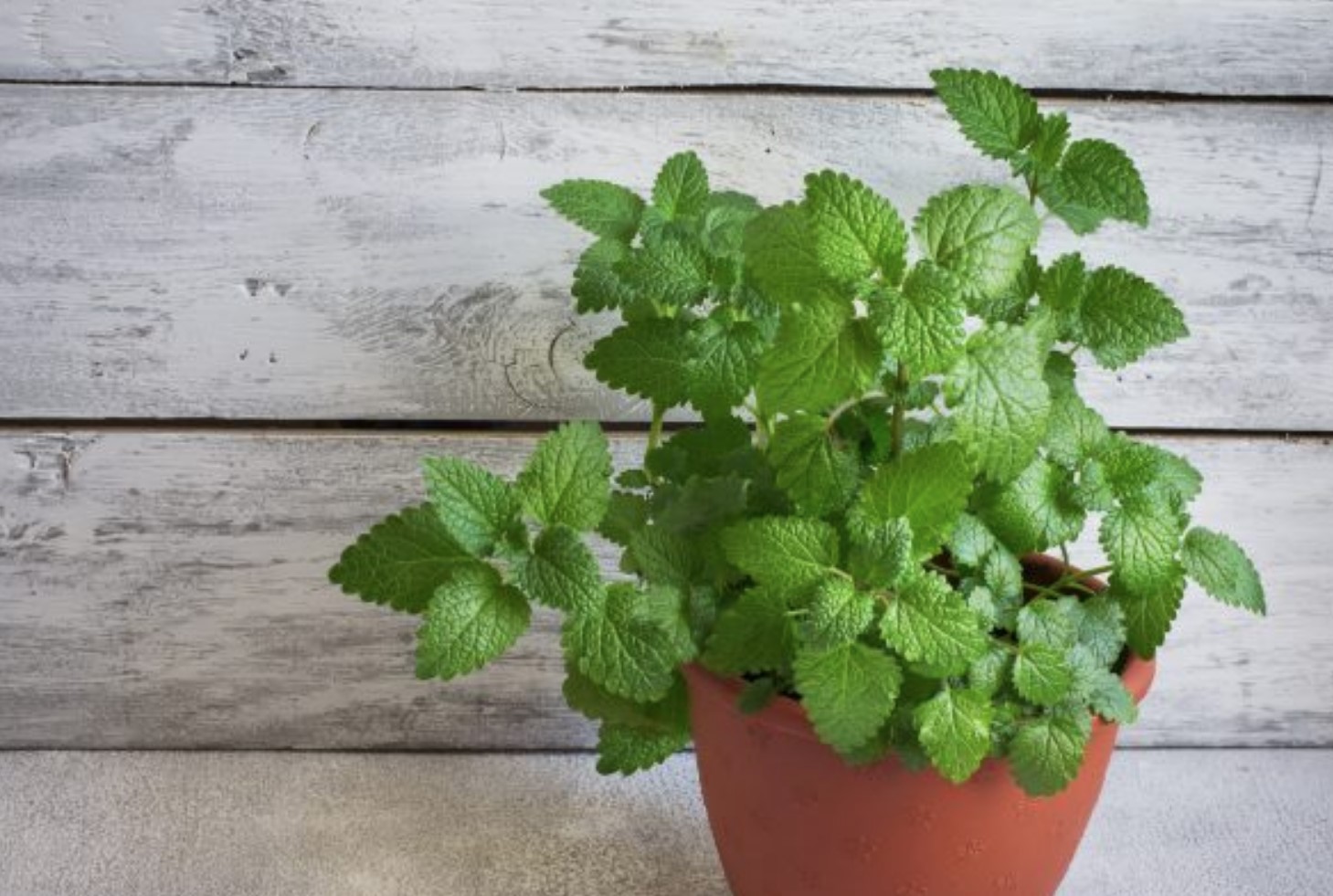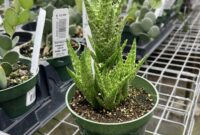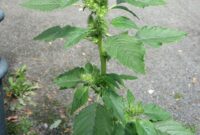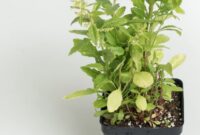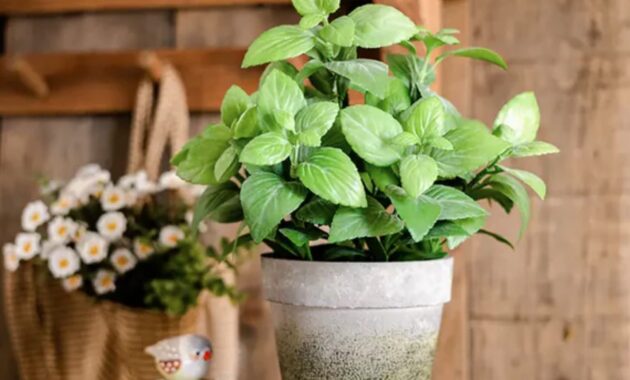
Peppermint, a refreshing herb with a distinctive aroma, has been cherished for centuries for its culinary, medicinal, and therapeutic properties. Whether you’re a seasoned gardener or a novice, growing peppermint is a rewarding experience. In this comprehensive guide, we’ll delve into the ins and outs of peppermint plant care, from planting and propagation to harvesting and utilization.
What is a Peppermint Plant?
Peppermint is a hybrid mint plant, resulting from the crossbreeding of watermint and spearmint. It’s characterized by its vibrant green leaves and the unmistakable aroma of menthol. Peppermint is a perennial herb that thrives in various climates, making it a versatile addition to any garden.
How to Grow a Peppermint Plant
Growing peppermint is relatively straightforward. Here’s a step-by-step guide:
- Choose the Right Location: Peppermint prefers full sun to partial shade. Ensure the location receives at least 6 hours of sunlight daily.
- Prepare the Soil: Peppermint thrives in well-draining, fertile soil. Amend your garden soil with compost or well-rotted manure to improve its quality.
- Planting: Plant peppermint seedlings or root cuttings in early spring. Space the plants about 18 inches apart to allow for growth.
- Watering: Keep the soil consistently moist, but avoid overwatering, as soggy soil can lead to root rot.
- Fertilizing: While peppermint doesn’t require heavy fertilization, you can apply a balanced liquid fertilizer once or twice during the growing season.
- Mulching: Mulching around the base of the plant helps retain moisture and suppress weeds.
Peppermint Plant Benefits
Peppermint offers a wide range of benefits, both physical and mental:
- Digestive Health: Peppermint tea can soothe upset stomachs and alleviate symptoms of indigestion.
- Pain Relief: Peppermint oil can be used topically to relieve muscle and joint pain.
- Respiratory Health: Inhaling peppermint oil can help clear congestion and alleviate respiratory issues.
- Mental Clarity: The invigorating aroma of peppermint can boost alertness and focus.
- Stress Relief: Peppermint can help reduce stress and anxiety.
Uses of Peppermint Plant
Peppermint is incredibly versatile and can be used in various ways:
- Culinary Uses:
- Flavoring tea, coffee, and cocktails
- Adding a refreshing twist to desserts and candies
- Enhancing the taste of savory dishes, such as lamb and vegetables
- Medicinal Uses:
- Treating headaches and migraines
- Relieving nausea and motion sickness
- Soothing insect bites and skin irritations
- Household Uses:
- Repelling pests, such as ants and mosquitoes
- Freshening the air in your home
- Cleaning surfaces and removing grease
Growing Peppermint Indoors
You can grow peppermint indoors in pots or containers. Here are some tips:
- Choose a Pot: Select a pot with drainage holes to prevent waterlogging.
- Use Potting Mix: Use a well-draining potting mix that’s rich in organic matter.
- Provide Adequate Light: Place your peppermint plant near a sunny window or use grow lights to supplement natural light.
- Maintain Humidity: Mist the plant regularly to increase humidity levels.
- Monitor Temperature: Keep the temperature between 65°F and 75°F (18°C and 24°C).
Peppermint Plant Medicinal Uses
Peppermint has been used in traditional medicine for centuries. Some of its medicinal uses include:
- Digestive Disorders: Relieving indigestion, bloating, and irritable bowel syndrome (IBS)
- Pain Relief: Alleviating headaches, muscle pain, and joint pain
- Respiratory Issues: Clearing congestion and improving breathing
- Mental Health: Reducing stress, anxiety, and fatigue
Peppermint Plant Health Benefits
In addition to its medicinal uses, peppermint offers numerous health benefits:
- Boosts Immunity: The antioxidants in peppermint can help strengthen the immune system.
- Improves Brain Function: Peppermint can enhance cognitive function, memory, and alertness.
- Promotes Healthy Skin: The anti-inflammatory properties of peppermint can soothe skin irritations and reduce acne.
- Aids in Weight Loss: Peppermint tea can help suppress appetite and boost metabolism.
Peppermint vs. Spearmint Plant
While peppermint and spearmint are closely related, they have distinct characteristics:
- Flavor: Peppermint has a stronger, more intense flavor with a higher menthol content. Spearmint has a milder, sweeter flavor.
- Appearance: Peppermint plants tend to be taller and bushier than spearmint plants.
- Uses: Peppermint is commonly used for medicinal purposes and in cooking, while spearmint is often used to flavor beverages and desserts.
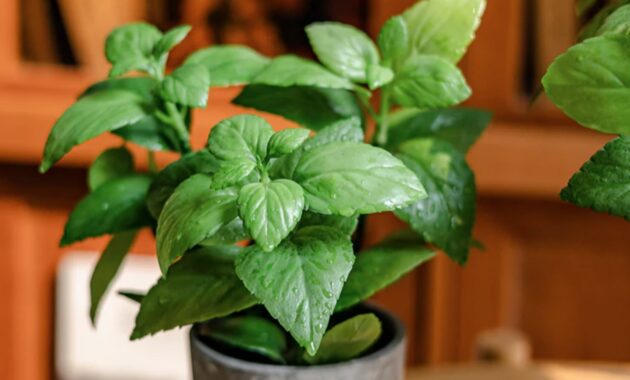
Harvesting Peppermint Leaves
The best time to harvest peppermint leaves is in the morning, when the essential oil content is highest. Here’s how to harvest:
- Choose the Right Leaves: Select healthy, vibrant leaves from the top of the plant.
- Harvesting Method: You can either snip off individual leaves or cut entire stems.
- Drying the Leaves: Lay the harvested leaves on a drying rack or paper towels in a warm, dry place.
Peppermint Plant for Tea
Peppermint tea is a popular beverage enjoyed worldwide. Here’s how to make it:
- Boil Water: Boil fresh, filtered water.
- Add Peppermint Leaves: Place a handful of fresh or dried peppermint leaves in a teacup.
- Steep: Pour the hot water over the leaves and let it steep for 5-10 minutes.
- Strain and Serve: Strain the tea into a mug and enjoy hot or iced.
Peppermint Plant Repels Pests
Peppermint’s strong aroma can deter various pests, including:
- Ants: Place peppermint leaves or peppermint oil near ant trails to repel them.
- Mosquitoes: Plant peppermint near outdoor seating areas to keep mosquitoes away.
- Moles: Use peppermint oil to repel moles from your garden.
Best Soil for Peppermint Plant
Peppermint thrives in well-draining, fertile soil with a pH between 6.0 and 7.0. You can improve your soil by adding compost or well-rotted manure.
Peppermint Plant Companion Plants
Peppermint can be planted alongside various companion plants that benefit from its strong aroma and pest-repelling properties:
- Rosemary
- Sage
- Thyme
- Chives
- Strawberries
Peppermint Plant Sun or Shade
Peppermint plants prefer full sun to partial shade. They can tolerate some shade, but they will grow more vigorously and produce more essential oil in full sun.
Uses of Peppermint Oil from Plant
Peppermint oil, extracted from peppermint leaves, has numerous uses:
- Aromatherapy: Used in diffusers to promote relaxation and relieve stress.
- Topical Application: Applied topically to relieve muscle pain, headaches, and skin irritations.
- Household Cleaner: Used as a natural cleaning agent to disinfect surfaces.
- Insect Repellent: Used to repel mosquitoes, ants, and other pests.
Peppermint Plant Fertilizer Needs
Peppermint plants have moderate fertilizer needs. You can apply a balanced liquid fertilizer once or twice during the growing season. However, excessive fertilization can lead to leggy growth and reduced essential oil production.
Peppermint Plant Uses in Cooking
Peppermint can add a refreshing flavor to various dishes:
- Desserts: Used to flavor ice cream, chocolate, and cookies.
- Beverages: Used to make tea, cocktails, and mocktails.
- Sauces and Dressings: Used to add a unique flavor to sauces and dressings.
- Meat Dishes: Used to marinate and flavor lamb and pork.
Peppermint Plant Propagation Methods
Peppermint can be propagated through various methods:
- Root Cuttings: Cut healthy root sections and plant them in moist soil.
- Stem Cuttings: Take stem cuttings and root them in water or potting mix.
- Division: Divide mature peppermint plants in the spring to create new plants.
Peppermint Plant Diseases
Peppermint plants are relatively resistant to diseases, but they can be susceptible to the following:
- Powdery Mildew: A fungal disease that causes a white powdery coating on the leaves.
- Verticillium Wilt: A fungal disease that can cause wilting and yellowing of the leaves.
- Root Rot: A fungal disease that can occur in poorly drained soil.

How to Dry Peppermint Leaves
Drying peppermint leaves is a simple process:
- Harvesting: Harvest the leaves on a dry day when the dew has evaporated.
- Drying Method: You can dry the leaves using one of the following methods:
- Air Drying: Lay the leaves on a drying rack or paper towels in a warm, dry place.
- Oven Drying: Place the leaves on a baking sheet and dry them in a low-temperature oven.
- Dehydrator: Use a food dehydrator to dry the leaves quickly and efficiently.
Conclusion
Peppermint is a versatile herb with numerous benefits. Whether you’re using it to flavor your food, soothe your digestive system, or relax your mind, peppermint can enhance your daily life. By following the tips and techniques outlined in this guide, you can
